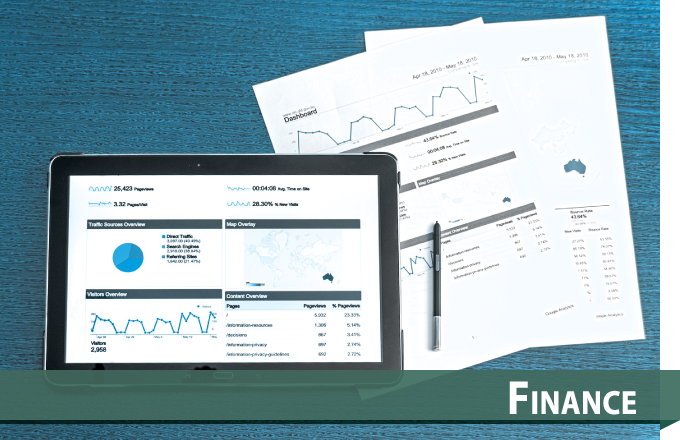This study uses two distinct quasi-natural experiments to examine the effect of institutional shareholders on corporate social responsibility (CSR). We first find that an exogenous increase in institutional holding caused by Russell Index reconstitutions improves portfolio firms’ CSR performance. We then find that firms have lower CSR ratings when shareholders are distracted due to exogenous shocks. Moreover, the effect of institutional ownership is stronger in CSR categories that are financially material. Furthermore, we show that institutional shareholders influence CSR through CSR-related proposals. Overall, our results suggest that institutional shareholders can generate real social impact.
February 2020
Journal of Financial Economics
The present research proposes a new perspective to investigate the effect of product anthropomorphism on consumers’ comparative judgment strategy in comparing two anthropomorphized (vs. two nonanthropomorphized) product options in a consideration set. Six experiments show that anthropomorphism increases consumers’ use of an absolute judgment strategy (vs. a dimension-by-dimension strategy) in comparative judgment, leading to increased preference for the option with a more favorable overall evaluation over the option with a greater number of superior dimensions. The effect is mediated by consumers’ perception of each anthropomorphized product alternative as an integrated entity rather than a bundle of separate attributes. The authors find the effect to be robust by directly tracing the process of participants’ information processing using MouseLab software and eye-tracking techniques, and by self-reported preferences and real consumption choices. Moreover, the effect is moderated by the motivation to seek maximized accuracy or ease. These studies have important implications for theories about anthropomorphism and comparative judgment as well as marketing practice.
February 2020
Journal of Consumer Research
Although research shows that competitive banks spur corporate growth, less is known about the impact of bank competition on corporate risk. Using a sample of more than 70,000 firm-year observations covering the period from 1975 through 1994, we find that deregulation that intensified competition among banks materially reduced corporate risk, especially among firms that rely heavily on bank finance. We find that competition-enhancing bank deregulation reduced corporate volatility by easing credit constraints when firms experience adverse shocks and reducing the procyclicality of borrowing.
February 2020
Journal of Corporate Finance
The lack of hard evidence in allegations about sexual misconduct makes it difficult to separate true allegations from false ones. We provide a model in which victims and potential libelers face the same costs and benefits from making an allegation, but the tendency for perpetrators of sexual misconduct to engage in repeat offenses allows semiseparation to occur, which lends credibility to such allegations. Our model also explains why reports about sexual misconduct are often delayed, and why the public rationally assigns less credibility to these delayed reports.
February 2020
American Economic Journal: Microeconomics
We study how vertical market structure affects the incentives of suppliers and customers to develop a new input that will enable the innovator to replace the incumbent supplier. In a vertical setting with an incumbent monopoly upstream supplier and two downstream firms, we show that vertical integration reduces the R&D incentives of the integrated parties, but increases that of the nonintegrated downstream rival. Strategic vertical integration may occur whereby the upstream incumbent integrates with a downstream firm to discourage or even preempt downstream disruptive R&D. Depending on the R&D costs, vertical integration may lower the social rate of innovation.
January 2020
Journal of Economics and Management Strategy
An agent performing risky experimentation can benefit from suspending it to learn directly about the state. ‘Positive’ information acquisition seeks news that would confirm the state that favours experimentation. It is used as a last-ditch effort when the agent is pessimistic about the risky arm before abandoning it. ‘Negative’ information acquisition seeks news that would demonstrate that experimentation is futile. It is used as an insurance strategy to avoid wasteful experimentation when the agent is still optimistic. A higher reward from risky experimentation expands the region of beliefs that the agent optimally chooses information acquisition rather than experimentation.
January 2020
The Economic Journal
In an environment subject to random fluctuations, when does an increase in the breadth of activities in which individuals interact together help foster collaboration on each activity? We show that when players, on average, prefer to stick to a cooperative agreement rather than reneging by taking their privately optimal action, then such an agreement can be approximated as equilibrium play in a sufficiently broad relationship. This is in contrast to existing results showing that a cooperative agreement can be sustained only if players prefer to adhere to it in every state of the world. We consider applications to favor exchange, multimarket contact, and relational contracts.
January 2020
Games and Economic Behavior
This research examines the effect of social exclusion on consumers’ preferences for visual density. Based on seven experimental studies, we reveal that consumers who perceive themselves as socially excluded evaluate products with dense visual patterns more positively than their nonexcluded peers. This effect occurs because social exclusion triggers a feeling of psychological emptiness and dense patterns can provide a sense of being “filled,” which helps to alleviate this feeling of emptiness. This effect is attenuated when consumers physically fill something or experience a feeling of “temporal density” (i.e., imagining a busy schedule with many tasks packed into a short time). These results shed light on consumers’ socially grounded product aesthetic preferences and offer practical implications for marketers, designers, and policy makers.
December 2019
Journal of Consumer Research
Using brokerage mergers and closures as natural experiments, we examine how exogenous changes in the information environment affect a firm’s financing choice. Our difference-in-differences approach shows that exogenous increases in information asymmetry lead firms to substitute away from equity and public debt toward bank debt. Firms with higher risk tend to substitute equity for bank debt, and firms with lower risk tend to substitute bonds for bank debt. The effect of the change in the information environment on a firm’s financing choice is more pronounced for firms with worse information environments, such as those with few initial analysts and younger firms. We demonstrate that the mechanism of the change is through a reduction of the issuance of equity and bonds but with an increase of the issuance of bank loans. Further analysis reveals that such firms tend to reduce long-term borrowing, reduce their issuance of subordinated debt, and increase their revolving credit lines.
December 2019
Management Science

























